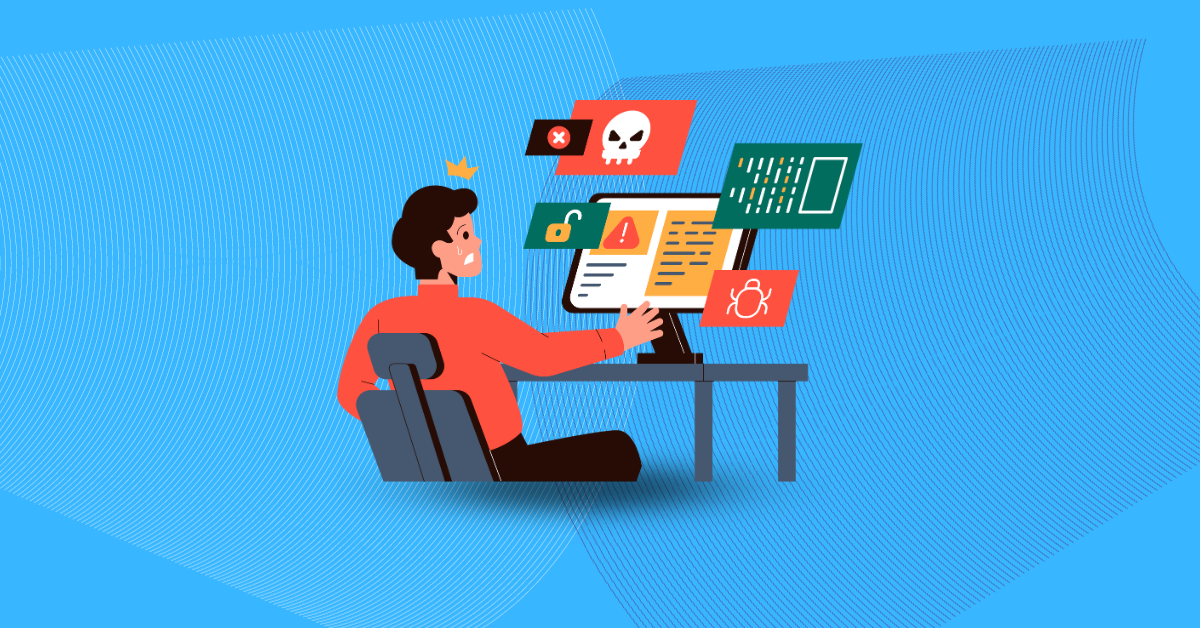

Did you know that 2,200 cyber attacks happen every single day? With that sort of relentless onslaught, it might make you wonder who has that much time on their hands. But, the reality we know all too well is that while human attackers may be orchestrating the attacks, much of the risk has to do with automated threats.
Automated systems disrupt, tamper with, or gain unauthorized access to an application, network, or digital system. They differ from traditional security risks in that automated threats use automated methods, such as bots, to orchestrate attacks. In contrast, traditional security risks rely on simpler approaches to execute their attacks.
Automated threats can cause extensive damage to the attacked systems, and it’s not uncommon for them to lead to data breaches or system downtime. With AI moving at lightning speed, automated attacks will only escalate. Therefore, individuals and businesses must take proactive measures to safeguard their digital assets against such malicious activities.
App developers should be concerned about automated threats for several reasons. Firstly, these threats exploit vulnerabilities in applications to carry out malicious activities like data breaches, identity theft, and unauthorized access. This not only compromises user data and privacy but also undermines the integrity and reputation of the app.
Automated threats also lead to service disruptions, such as DDoS attacks, which overwhelm the app’s servers, leading to downtime and revenue loss. Moreover, these threats often evolve rapidly, making it challenging for developers to keep up with the latest security measures. These disruptions include skewed analytics and data that impact business decisions.
Automated threats encompass a range of malicious activities executed through automated software. These include bots that carry out credential stuffing, where stolen account credentials are tested en masse against various websites. There are also scraping bots that systematically extract large amounts of data from websites, potentially infringing on copyright or stealing sensitive information. Below is a breakdown.
The emergence of Artificial Intelligence (AI) has paved the way for the automation of online tasks, with bots or robots playing a significant role in this process. While bots have helped streamline various tasks, they have also made it easier for cybercriminals to launch attacks on computer systems.
Cybercriminals rely on bots to execute the most sophisticated attacks, such as:
Twitter (X)bots are an example of automated threats in the real world. By creating many fake accounts, Twitter bots can behave differently from genuine accounts. They can like, retweet, or comment on posts that spread misinformation. Moreover, these fake accounts can respond to direct messages (DMs) and deceive unsuspecting individuals into parting with their money.
Scrapers, also known as web scrapers or web crawlers, are tools that extract data from websites. Like bots, scrapers can bring businesses many benefits, such as search engine indexing, but when used maliciously, they become web scraping threats.
Scrapers become automated threats due to the following reasons:
LinkedIn is one example of a platform that experienced a massive data scrape for malicious purposes. Namely, the hacker automatically collected data from LinkedIn user profiles to sell it on their forum for a significant sum.
Credential stuffing is a cyberattack that involves accessing an account’s login information, such as usernames and passwords. Once the attacker has obtained this information, they can use it to take control of the account or gain access to sensitive data belonging to the account holder.
The fact that Norton LifeLock, a global leader in consumer cyber safety, suffered from credential stuffing in 2023 only highlights how dangerous these automated attacks can be.
To mitigate the risk of their applications falling victim to automated attacks, developers can implement a series of best practices. These measures aim to enhance security and ensure the integrity of the app’s operations. Key strategies include:
Employing CAPTCHA Mechanisms: Integrating CAPTCHA challenges helps distinguish between human users and automated bots, effectively blocking many automated attacks.
Rate Limiting: Implementing rate limiting on APIs and user actions prevents excessive requests from a single source, a common characteristic of automated attacks.
Using Advanced Bot Detection Solutions: Leveraging sophisticated bot detection tools can help identify and block more nuanced automated threats that simple CAPTCHAs might miss.
Regularly Updating and Patching: Keeping software up-to-date with the latest patches and security updates helps close vulnerabilities that automated scripts might exploit.
Monitoring and Analytics: Constantly monitoring traffic and employing analytics can help quickly identify unusual patterns indicative of automated attacks.
Authentication Mechanisms: Using strong authentication methods, like multi-factor authentication, adds an additional layer of security against automated exploits.
Automated threats are merely one aspect of software security. The spectrum of vulnerabilities extends far beyond automated attacks. From code injections and data breaches to compliance issues and insider threats, the array of security challenges is vast and ever-evolving. Addressing these concerns requires a comprehensive and proactive approach to security.
Kiuwan provides solutions for developers to ensure code security, vulnerability detection, enforcement of coding guidelines, and management of open-source components. Using Static Application Security Testing (SAST) and software composition analysis (SCA), Kiuwan can help you transform your software development life cycle. Sign up today for a free trial and try our code security tools.


